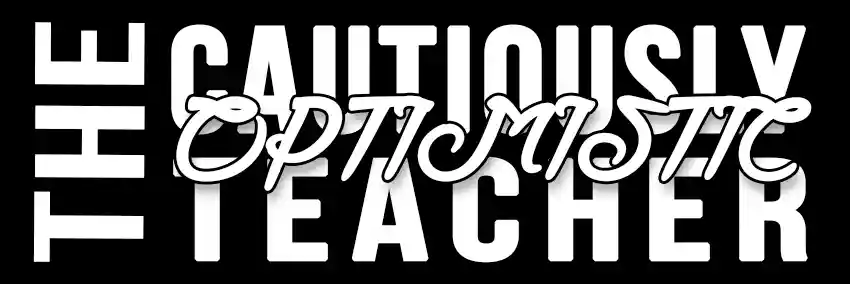Benefits of Differentiated Instruction: A Teacher’s Guide
Differentiated instruction is simply good teaching made intentional: you set clear learning goals, then offer more than one way to get there. Instead of one pace, one text, or one kind of assignment for everyone, you adjust the content, the learning process, and the product so students can access the same objectives at a just-right level. That might mean varied reading levels on the same topic, scaffolded steps for practice, or choice in how students show what they know—video, essay, lab, or model. It’s not 30 separate lesson plans; it’s a flexible roadmap that widens access and raises expectations at the same time.
This guide shows why differentiation pays off and how to make it workable. You’ll see the biggest benefits for students and teachers, what the research says, and the core dimensions to adjust (content, process, product, environment, grouping). We’ll cover assessment moves that make differentiation doable, technology and AI supports, subject-by-subject examples, equity gains you can observe, a one-week starter plan, common pitfalls, and how to measure impact. Let’s make it practical.
Why differentiated instruction matters now
Look around your classroom: readiness levels are wider, multilingual learners are growing in number, and students bring uneven background knowledge after disrupted schooling. A one-size lesson leaves too many behind. Differentiated instruction is a student-first approach that individualizes within shared goals, adjusting content, process, products, assessment, and grouping so each learner gets the right mix of challenge and support. The benefits of differentiated instruction—higher engagement, inclusivity, and confidence—make it a timely, research-backed way to honor standards and humanize learning.
The top benefits of differentiated instruction for students
Differentiation aligns tasks to learners, not the other way around. With just-right challenge and support, students lean in, participate, and persist. The benefits of differentiated instruction show up as more voices, steady progress toward standards, and a welcoming, student-first classroom culture.
- Engagement rises: varied modalities and scaffolded entry points invite more learners.
- Inclusivity improves: multilingual learners and students with disabilities access core content.
- Motivation grows: meaningful choice in process and product fuels interest.
- Progress steadies: shared goals at just-right levels keep everyone moving.
- Confidence builds: frequent success strengthens self-efficacy and risk-taking.
- Collaboration strengthens: peer support and flexible groups build community.
The benefits for teachers: clarity, efficiency, and confidence
Differentiation doesn’t mean more work forever; it means smarter work sooner. Clear learning goals plus quick baseline checks sharpen your plan, so you target support instead of reteaching the whole class. Reusable routines (choice boards, stations, tiered tasks) streamline prep and management. And as students engage and progress, your professional confidence grows. In short, the benefits of differentiated instruction extend to teachers, too.
- Clarity: Baselines and “must/ought/nice to have” tiers keep objectives tight and transparent.
- Efficiency: Flexible grouping and centers focus help where it matters most.
- Feedback loops: Frequent formative and self-assessment guide next steps.
- Confidence: Visible growth across readiness levels validates your decisions and risk-taking.
What the research says about impact
Decades of research back the benefits of differentiated instruction. Tomlinson’s work frames it as aligning teaching to readiness, interests, and learning profiles, and classroom studies link it to stronger engagement and access for multilingual learners and students with disabilities. A large synthesis by John Hattie found that differentiating instruction yields impacts more than twice those of undifferentiated teaching. Recent reviews likewise report gains in achievement, improved learning outcomes, and better student self-reflection when instruction and assessment are tailored—especially when combined with formative checks and student self-assessment.
The core dimensions: content, process, product, environment, and grouping
Think of differentiation as five adjustable dials. You keep standards fixed while tuning each dial so more students hit the target. Research-informed frameworks (Tomlinson; SIUE) emphasize content, process, product, and environment; add flexible grouping from classroom practice to round out a practical set you can use daily.
- Content: Vary texts/media and pre-teach key vocabulary to build prior knowledge.
- Process: Scaffold with modeling and think‑pair‑share; use stations for targeted practice.
- Product: Offer choice (essay, podcast, comic) with a common rubric and criteria.
- Environment: Create clear norms, visual supports, and quiet/active zones that welcome all learners.
- Grouping: Use flexible, needs-based groups—teacher table, peer tutors, and jigsaw—to give just‑right support.
Assessment practices that make differentiation doable
Assessment is the engine of differentiated instruction: you set clear goals, gather quick evidence, and adjust. Start with baselines (inventories or diagnostics) to see readiness, then use frequent, low‑stakes checks so students and you know what to do next. Keep expectations common with shared criteria while allowing varied ways to show learning.
- Baseline checks: Quick diagnostics and learning inventories to target instruction.
- Formative routines: Exit tickets, polls, think‑pair‑share, or a fast sketch to surface understanding.
- Self‑assessment: Have students score themselves on your rubric; it boosts ownership and impact.
- Brief reflection: Ask why they earned that score and what next step they’ll take.
- Tiered questions: Vary complexity (not quantity) so all engage in higher‑order thinking.
- Flexible evidence: Different product forms under one rubric (essay, audio, comic) keep standards intact while realizing the benefits of differentiated instruction.
Technology and AI that make differentiation scalable
The right tools remove the bottlenecks. Technology widens access (audio, visuals, translation) while AI speeds the planning and feedback loops that make the benefits of differentiated instruction sustainable. Pair clear goals with simple, reusable tech routines so you can individualize without multiplying your workload.
- Multiple modes, zero stigma: Read‑aloud, dictation, and audiobooks support access and independence.
- Blended gap‑closing: Curated digital practice targets skill gaps between mini‑lessons.
- AI planning boosts: Use our Differentiated Instruction Helper, Worksheet Maker, and Question Generator to tier tasks fast.
- Live evidence: Quick LMS polls/quizzes and digital rubrics power regrouping and student self‑assessment.
What it looks like across subjects and grade levels
Differentiation changes shape by content and age, but the pattern is consistent: preload key knowledge, scaffold the process, offer product choice, and use flexible grouping such as stations and jigsaw. Keep one set of goals and criteria for all. The result is doable routines that deliver the benefits of differentiated instruction without 30 lesson plans.
- Primary ELA: Stations for phonics/fluency; teacher table; read‑aloud access.
- Elementary math: Tiered problem sets; manipulatives or drawings; shared goals.
- Middle school science: Jigsaw labs; expert groups; report, infographic, or video.
- High school ELA: Choice board responses; one rubric; peer/self‑assessment.
- Social studies/civics: Preload vocabulary/visuals; varied‑level texts; seminar or timeline.
Equity and inclusion benefits you can see
Differentiated instruction makes equity visible: one set of goals, multiple pathways. Multilingual learners and students with disabilities access core content through preloaded background knowledge, explicit vocabulary, read‑aloud/dictation, and varied products. Flexible grouping lifts more voices and reduces stigma so support feels normal, not special.
- Inclusive access: leveled texts, visuals, and assistive tech.
- More participation: scaffolded entry and meaningful choice.
- Fair grading: common rubrics across product formats.
- Belonging: welcoming norms and options reflect identities.
A simple plan to get started this week
You don’t need a makeover—just one week of tight routines. Pick one class and standard. Keep a single rubric for all products. Use baselines, scaffolds, and choice to activate the benefits of differentiated instruction fast. Here’s a simple five‑day plan you can rinse and repeat.
- Monday: Clarify goal; 3‑item baseline + vocab/visuals; group flexibly; must/ought/nice practice.
- Tuesday: Model strategy; two stations (teacher table + independent); exit ticket guides regrouping.
- Wednesday: Choice‑board drafts under one rubric; peer support; read‑aloud/dictation available.
- Thursday: Mini‑lessons to fix patterns; jigsaw share; revise; quick self‑assessment on rubric.
- Friday: Short tiered‑complexity check; student reflection (one win/next step); plan next week.
Common pitfalls and how to avoid them
Even with the best intentions, differentiation can stall when plans get too complex or grading gets fuzzy. Keep the focus on clear goals, quick evidence, and flexible routines so the benefits of differentiated instruction show up without overwhelming you or your students.
- Overcomplicating design: Limit to must/ought/nice tiers and one common rubric.
- Quantity over complexity: Change task complexity, not just length or number.
- Skipping baselines: Use quick diagnostics and exit tickets to target and regroup.
- Static groups: Keep groups flexible; rotate a short teacher table and peer support.
- Choice without scaffolds or drafts: Preload vocabulary, model, give templates, and allow revise/self-assess.
How to measure impact and keep improving
You improve what you can see. Pair clear goals with quick evidence cycles: a short baseline, weekly checks, and one rubric across products. Collect fast data—exit tickets, station work, teacher‑table notes, and student self‑scores (high‑impact in Hattie)—then regroup, adjust scaffolds, and refine choices so the benefits of differentiated instruction compound.
- Define success: Standard + common rubric proficiency.
- Trend it: Exit‑ticket accuracy and product scores, plus student self‑assessment/brief reflections (a high‑impact move per Hattie).
- Equity check: Participation, completion, mastery by subgroup; rotate access to the teacher table.
- PDSA cycle: Tweak one dial (content, process, product, grouping, environment), reteach, recheck, and keep what works.
Conclusion
Differentiation isn’t a stunt; it’s steady craft. Hold goals constant, tune the dials (content, process, product, environment, grouping), and power it with quick baselines, scaffolds, and common rubrics. The payoff is visible: higher engagement, broader access for multilingual learners and students with disabilities, clearer signals for you, and more confident, reflective learners. Start small, keep evidence flowing, and refine one routine at a time—the gains compound.
If you’re ready to try the five‑day plan, we can help you scale it without extra hours. At The Cautiously Optimistic Teacher, you’ll find plug‑and‑play templates plus AI tools—Differentiated Instruction Helper, Worksheet Maker, Question Generator, and Report Card Commentor—to tier tasks, check progress, and give feedback fast. Join our community for weekly ideas you can use on Monday, and turn differentiation into a calm, repeatable habit that lifts every student.







